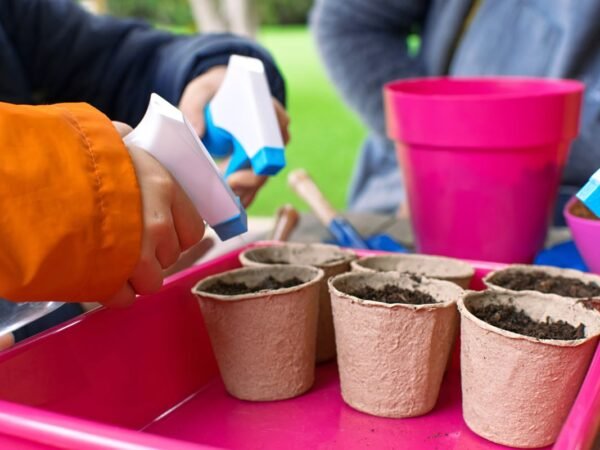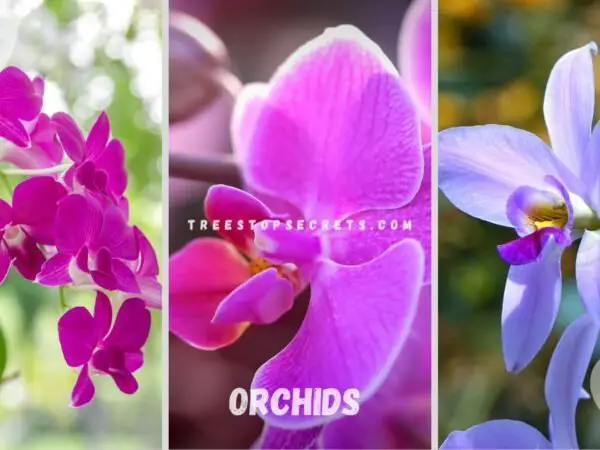Ever wondered what's up with your orchid when its leaves start turning yellow? You're not alone. The vibrant green leaves of an orchid can be a cause for concern when they begin to change color. Understanding the reasons behind this transformation, such as nutrients and yellow leaf, is crucial in nurturing your precious plant back to health. In this guide, we'll delve into the various factors that could lead to yellowing orchid leaves and provide actionable insights on how to address each issue effectively.
Key Takeaways
- Regularly inspect your orchid for any signs of aphids or yellowing leaves to address any issues promptly.
- Adjust Watering Practices: Be mindful of overwatering or underwatering your orchid, and ensure proper drainage to prevent water-related leaf discoloration.
- Provide Proper Nutrition: Feed your orchid with a balanced fertilizer and ensure it receives adequate light to support healthy leaf growth.
- Monitor for Pests and Diseases: Keep an eye out for pests and diseases, and take proactive action to prevent infestations and infections.
- Maintain Ideal Growing Conditions: Create and maintain optimal environmental conditions, including temperature, humidity, air circulation, and action to support the overall health of your orchid.
- Seek Professional Help if Needed: If despite your efforts, the yellowing of the leaves persists, consider seeking advice from a professional orchid grower or horticulturist.
Understanding Yellow Orchid Leaves
Natural Aging
Orchid leaves naturally yellow as they age, which is a normal part of the orchid's growth cycle. Older leaves may turn yellow and eventually drop off as new ones grow in their place. This process is similar to how trees shed their leaves in the fall, making way for new growth in the spring.
When an orchid leaf turns yellow due to natural aging, it typically starts from the bottom of the plant and progresses upward. As these older leaves serve their purpose and begin to decline, they lose chlorophyll, causing them to appear yellow before they eventually wither away.
Environmental Factors
Yellowing can be caused by exposure to drafts or sudden temperature changes. If an orchid is placed near a drafty window or experiences rapid fluctuations in temperature, its leaves may start turning yellow as a response to stress.
High humidity levels can also lead to yellowing leaves on an orchid. While these plants require humidity for optimal growth, excessive moisture in the air can create conditions that promote fungal diseases and cause leaf discoloration.
Air pollutants such as cigarette smoke or chemical fumes can also cause orchid leaves to turn yellow. These contaminants interfere with photosynthesis and damage the plant's foliage over time.
Nutritional Deficiencies
Lack of nitrogen can result in orchid leaves turning yellow, signaling a deficiency that needs attention. Nitrogen is crucial for healthy leaf development and overall plant vigor; without it, orchids may exhibit stunted growth alongside discolored foliage.
Insufficient potassium may also cause leaf discoloration in orchids, leading to pale or mottled patches on their leaves. Potassium plays a vital role in maintaining proper water balance within cells and promoting strong stems and roots.
Another common nutritional deficiency that results in yellowing of orchid leaves is phosphorus deficiency. When lacking this essential nutrient, phosphorus-deprived plants often display dark green coloration followed by reddish-purple tints before ultimately developing yellowed areas on their foliage.
Recognizing Natural Aging
Orchid leaves, like all living things, have a natural lifespan. As new growth emerges, older leaves may be pushed out and start to yellow before falling off. This yellowing is an indication that the leaf has reached the end of its life cycle.
When orchid leaves turn yellow, it's often a sign of aging. The vibrant green color they once had starts to fade away as they age. You might notice the edges of the leaves turning yellow first before the entire leaf changes color.
In essence, orchid leaves naturally senesce after a certain period. This means that as part of their normal life cycle, they will eventually turn yellow and fall off to make way for new growth. It's important to recognize this natural process so you don't mistake it for a problem with your plant.
Yellowing along the edges of orchid leaves is one of the clear signs that they are reaching the end of their lifespan. As older leaves lose their vibrancy and vitality, this change in color becomes more noticeable over time.
It's essential for orchid growers to understand these signs of aging so they can differentiate between natural processes and potential issues affecting their plants' health.
Identifying Environmental Impacts
When orchid leaves turn yellow, it can be a sign of various environmental impacts. Light exposure plays a significant role in the health of orchid foliage. Excessive sunlight can lead to sunburn spots and yellowing leaves, while inadequate light may result in pale or yellowish foliage. It's crucial to ensure that orchids receive the right amount of light to prevent leaf discoloration.
Temperature fluctuations also have a profound effect on orchid leaves. Sudden drops in temperature can trigger leaf yellowing, while extreme heat or cold can stress the plant, causing its foliage to turn yellow. Consistency in temperature is essential for maintaining healthy green leaves on orchids.
Moreover, humidity levels greatly influence the condition of an orchid's leaves. Low humidity levels can cause dryness and yellowing of the leaves, whereas high humidity without proper air circulation may also lead to leaf discoloration. Maintaining optimal humidity levels is vital for ensuring healthy and vibrant foliage on orchids.
Light Exposure
Proper light exposure is crucial for preventing yellowing of orchid leaves. Excessive sunlight can cause sunburn spots and lead to overall leaf discoloration. On the other hand, insufficient light may result in pale or yellowish foliage due to lack of chlorophyll production from photosynthesis.
For example, if an orchid is placed near a window with direct sunlight for extended periods, its leaves might start turning yellow due to excessive sun exposure. Conversely, if it's kept in a dimly lit area with minimal natural light, its growth might be stunted and its existing leaves could become pale or discolored.
Addressing Watering Issues
When orchid leaves turn yellow, it can often be attributed to watering issues. Overwatering is a common cause of yellowing leaves in orchids. This occurs when the roots are consistently exposed to excessive moisture, leading to root rot. The symptoms of overwatering include yellowing leaves that typically start at the bottom of the plant and progress upwards. Overwatered orchids may exhibit wilting and mushy roots.
Conversely, underwatering can also result in yellow orchid leaves. When an orchid lacks sufficient water, its leaves become dehydrated and begin to turn yellow. Underwatered orchids often display wrinkled, discolored leaves as a sign of distress. Furthermore, a dry potting medium and shriveled pseudobulbs are clear indicators of underwatering issues in orchids.
Managing Nutritional Needs
When orchid leaves turn yellow, it could indicate a variety of nutritional deficiencies. Over-fertilization can cause nutrient imbalances, leading to leaf yellowing. On the flip side, under-fertilization may result in pale or yellowish foliage in orchids. Striking the right balance in fertilization frequency is crucial for maintaining healthy leaf color.
Proper fertilization ensures that orchids receive essential nutrients without being overwhelmed by an excessive amount. Nitrogen deficiency often causes older leaves to turn pale or yellow, signaling the need for nitrogen-rich fertilizer. Similarly, potassium deficiency can lead to chlorosis and overall leaf discoloration. It's important to monitor these signs and address them promptly through appropriate fertilization techniques.
Fertilization Frequency
-
Over-fertilization can result in nutrient imbalances and lead to leaf yellowing
-
Under-fertilization may cause pale or yellowish foliage in orchids
-
Proper fertilization frequency is crucial for healthy leaf color
Essential Nutrients are vital for maintaining vibrant green leaves on your orchids. A lack of essential nutrients like nitrogen, phosphorus, and potassium can manifest as various issues with the plant's foliage. Nitrogen plays a critical role in ensuring lush green growth but when deficient it leads to older leaves turning pale or even yellow. Potassium deficiency results in chlorosis - a condition where the leaves lose their natural green color due to insufficient chlorophyll production which affects photosynthesis. Phosphorus deficiency manifests itself as dark green veins with surrounding yellow tissue creating an unsightly appearance on your precious orchid plants.
Essential Nutrients
-
Nitrogen deficiency often causes older leaves to turn pale or yellow
-
Potassium deficiency can lead to chlorosis and overall leaf discoloration
-
Phosphorus deficiency manifests as dark green veins with surrounding yellow tissue
Combating Pests and Diseases
Common Pests
Orchids are susceptible to various pests that can cause the leaves to turn yellow. Spider mites are one such pest, which can be identified by the stippling and tiny dots they leave on the undersides of orchid leaves. These tiny creatures pierce the plant cells to feed, causing damage that manifests as discolored spots or patches on the foliage. Another common orchid pest is scale insects, appearing as raised bumps on the surface of leaves. Their feeding activity weakens the plant, leading to yellowing and overall decline in health. aphids can also infest orchids, feeding on sap from the underside of leaves and causing discoloration.
To combat these pests effectively, it's crucial for cultivation experts and hobbyists alike to regularly inspect their orchids for any signs of infestation. If detected early, measures such as gently wiping down affected areas with a damp cloth or using insecticidal soap can help control these pests before they cause significant damage.
Disease Symptoms
Aside from pests, various diseases can also lead to yellowing of orchid leaves. Viral infections often result in mottling and distorted growth, accompanied by leaf yellowing. Bacterial infections typically produce water-soaked lesions that eventually turn brown or black; this discoloration then spreads throughout the affected leaf tissue. Furthermore, fungal diseases may manifest through wilting, spotting, browning followed by leaf yellowness.
When faced with symptoms like these in their beloved plants' foliage, both novice growers and seasoned enthusiasts should take immediate action to diagnose and treat any underlying disease issues promptly.
Preventing Yellow Leaves
Proper Care Routine
Following a consistent care routine is essential to prevent yellow leaves on your orchid. Regularly inspect the plant for pests and diseases as they can cause leaf discoloration. Providing appropriate light, water, and nutrients supports overall plant health and helps maintain vibrant green leaves.
Monitoring Plant Health is crucial in preventing yellow leaves. Regularly check for changes in leaf color, which can indicate the plant's health status. Also, keep an eye on new growth for signs of nutrient deficiencies or environmental stress that could lead to yellowing foliage.
Treating Yellowing Leaves
Adjusting Care Practices
When orchid leaves turn yellow, it could signal an underlying issue with the plant's care. Adjust watering frequency by allowing the top inch of the potting mix to dry out before re-watering. This prevents overwatering, a common cause of yellowing leaves. Consider modifying fertilization schedules if nutrient deficiencies are suspected as the cause of leaf discoloration.
To address potential light or temperature issues, make adjustments to light exposure and temperature control based on your orchid's specific needs. If you notice that your orchid is receiving too much direct sunlight or not enough light, relocate it accordingly to ensure optimal growth conditions.
Disease Management
Promptly isolate any infected plants from the rest of your collection when dealing with yellowing leaves caused by disease. This helps prevent further spread within your collection and allows for targeted treatment without affecting healthy plants.
When treating fungal or bacterial infections that may be causing leaf discoloration, utilize appropriate fungicides or bactericides recommended for orchids. Remove any affected foliage carefully while maintaining good sanitation practices to prevent reinfection.
Maintaining Optimal Conditions
Ideal Light and Temperature
To prevent orchid leaves from turning yellow, it's crucial to ensure they receive the right amount of light. Most orchids thrive in bright, indirect light, which means placing them near a window where they can get sunlight without being directly exposed to it. This helps maintain their vibrant green foliage. Maintaining consistent temperatures within the optimal range for your specific orchid type is essential. Sudden temperature fluctuations can stress the plant and lead to leaf discoloration.
For instance, Phalaenopsis orchids prefer temperatures between 65-75°F during the day and slightly cooler at night. On the other hand, Cattleya orchids thrive in warmer conditions with daytime temperatures around 70-85°F and nighttime temperatures about 10 degrees lower.
Correct Watering Technique
Proper watering techniques play a significant role in preventing orchid leaves from turning yellow. It's important to water thoroughly but then allow adequate drying time between watering sessions to avoid waterlogged conditions that contribute to leaf yellowness. Using well-draining potting media also helps prevent excess moisture around the roots.
Moreover, adjusting your watering frequency based on environmental factors such as humidity levels is crucial for maintaining healthy foliage. For example, during periods of high humidity, you might need to water less frequently compared to drier conditions when more frequent watering may be necessary.
Final Remarks
You've now learned how to decode the message behind your orchid's yellowing leaves. Remember, just like a traffic light, yellow doesn't always mean stop; it can be a signal to proceed with caution. By understanding the natural aging process, environmental impacts, watering, nutrition, and pest management, you're equipped to nurture your orchid back to health. Keep a keen eye on your plant and take proactive measures to prevent and treat yellowing leaves.
Now it's time to put your newfound knowledge into action. Take a stroll over to your orchid and assess its leaves. Are they vibrant green or hinting at a deeper issue? Implement the strategies you've learned today and watch as your orchid thrives once more. With your attentive care, those yellow leaves will soon be a thing of the past.
Frequently Asked Questions
What are the common reasons for orchid leaves turning yellow?
Yellowing of orchid leaves can be due to natural aging, environmental stress, overwatering, nutrient deficiencies, pests or diseases.
How can I identify if yellowing orchid leaves are a result of natural aging?
Natural aging is indicated by the oldest bottom leaves turning yellow and then drying out. It's a normal process for an orchid plant.
What environmental impacts should I consider when addressing yellowing orchid leaves?
Factors like excessive sunlight, low humidity levels, extreme temperatures or drafts can cause stress and lead to yellowing of orchid leaves.
How do I address watering issues that may be causing my orchid's leaves to turn yellow?
Overwatering is a common issue. Ensure proper drainage and allow the growing medium to dry slightly before watering again.
What nutritional needs should I manage to prevent my orchids' leaves from turning yellow?
Orchids require balanced fertilization. Use a specialized fertilizer with higher nitrogen content during active growth periods.
How can I prevent and combat pests and diseases that cause my orchids' leaves to turn yellow?
Regularly inspect your plants for signs of pests or diseases. Treat any issues promptly using appropriate methods such as neem oil for pests or hydrogen peroxide for root rot prevention.
Image Source: Paid image from CANVA





